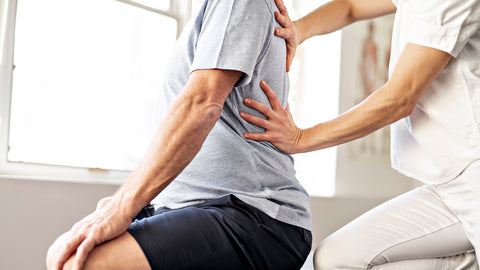Spinal health is spiralling

Ever heard of the story ‘Hunchback of Notre Dame’? To recap – it’s a story of a man who is hunchbacked and is shamed for his so called “ugliness”. The moral of the story is that looks can be deceiving and that the world isn’t perfect. Although the main character had a disfigurement, he was the kindest, most loyal, and honourable man.
Today this message still holds true. Despite our flaws, everyone is still their unique self, smashing goals and achieving great things – no matter how small the achievement. From a literal sense, it’s more and more common for people to notice a slight hunch in their back. People generally let their spine relax into a natural state and typically hunch over their phone or desk, rarely considering if their posture is correct. Whether you’re sitting down, standing up, or sleeping, the spine almost always has pressure on it.
The 3 natural curves in our spine.
Our spines naturally have three gentle curves: in the neck, lower back, and upper back. A curve can become more defined when someone has poor posture, if they are in an accident, or can happen naturally with aging. Any pain felt in the spine should not be ignored. Inflammation in their area can have lasting effects on your entire body, especially our mobility at an older age.
What is ‘Kyphosis’?
Having a round back or a hunchback is a condition called ‘kyphosis’. This often starts from a young age, gradually becoming a more significant bend as you get older. Treatment becomes extremely difficult if left too late. It can lead to more serious problems like laboured breathing due to the pressure put on your lungs. Practice good posture and strengthen the muscle in your back to prevent this.
Why could women be more likely to develop a bad posture?
Women can be more likely to experience a hunched back because their estrogen levels naturally decline over time, affecting bone density and strength. Lower estrogen accelerates during menopause, making it harder for the body to maintain good posture. For men and women feeling brittle in their bones, they should try to take calcium and vitamin D to promote bone health. Maintain a healthy weight and an active lifestyle to effortlessly slow down an arching back.
Beware of ‘tradies back’
Physical workers who like to put their back into getting hard work done are more likely to suffer lower-back pain. Often referred to as the “tradies back”, heavy lifting or demanding work can take its toll. Pinched nerves and stressed joints cause the mechanical structure of your spine to slow down and cause sharp pains. It’s important to keep an eye on muscle spasms and pain during any sort of physical activity. Take it easy if you feel the slightest pain.
Try: standing with your back to the wall. Have your feet slightly away from the wall. See how your relaxed posture feels and looks compared to when you push your entire spine flat against the wall (have your head touching the wall as well). Notice the difference between the right and wrong postures?


